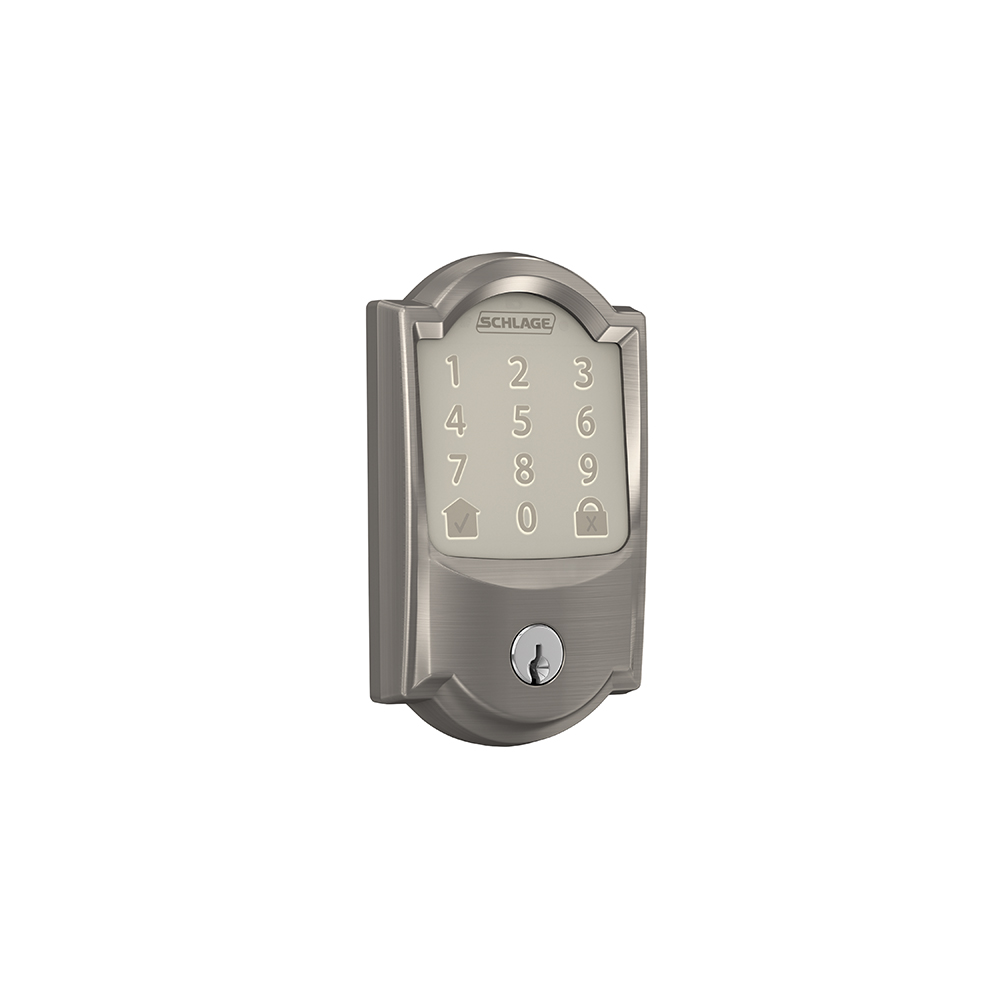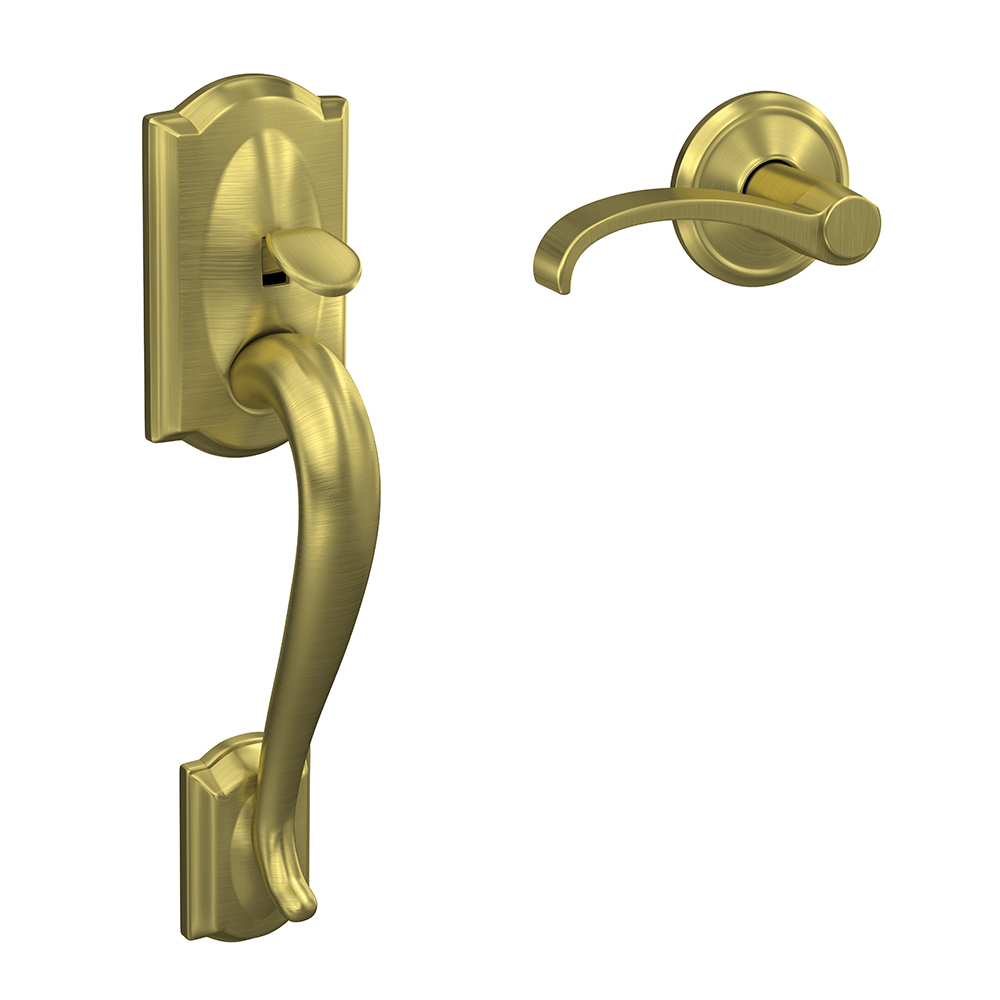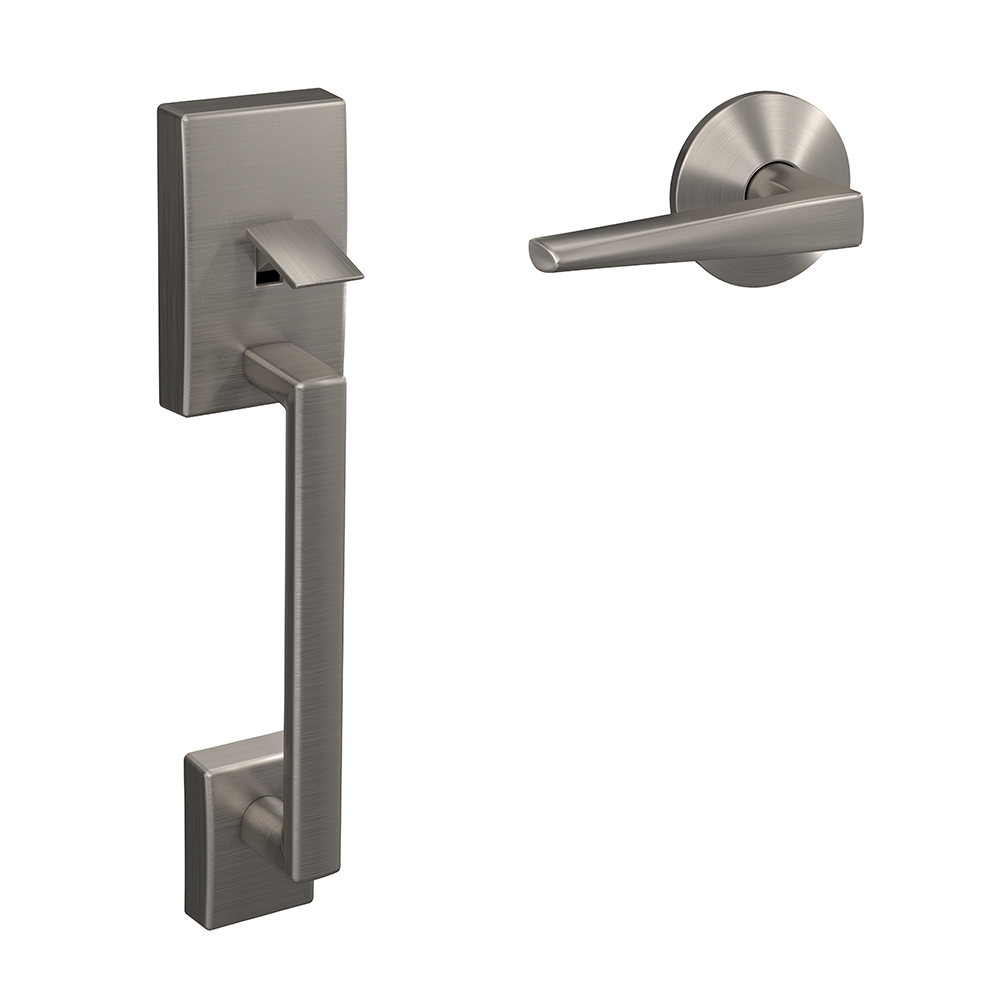How to grow your own fruit and vegetables in containers.
Wednesday, May 12, 2021
Try these 10 fruits, vegetables, herbs you can grow in containers, plus our tips on recipes to make with your harvest.
Choose your container wisely
Before we get to the plant list, let us start by saying that growing container vegetables typically requires larger-than-usual pots. Veggies tend to be bigger and need more water, so you’ll need to give them plenty of space and deep soil to hold the moisture. The Old Farmer’s Almanac recommends barrels, buckets, large tubs and boxes. Whatever you choose, make sure it has drainage holes or add some of your own.
If you want or need to use smaller containers – maybe you’re planting a balcony garden – just choose plants accordingly. We’ll let you know which plants are best for smaller gardens below.
Spinach and kale
Small-space gardening fans, rejoice! If you’re growing spinach and kale, you’re in luck. Put one spinach plant in just an 8-inch container or three to five kale plants in a single 20-inch pot. Both varieties prefer indirect sunlight, so if you’re growing them outside, find a shady spot. You can also grow them indoors, even in the winter. One of the nice things about kale is that you can start it from seed or transplant it, a great way to share your garden with friends and neighbors.
You can also grow lettuce of nearly any variety in containers since they have a shallow root system, making it easier than ever to get your greens.
How to use it: The obvious answer is to use your bounty to make a salad. Consider other recipes like a vegetarian lettuce wrap, add spinach to your next omelet or try your hand at baked kale chips.
Summer squash
It’s a common misconception that you need a lot of space to grow zucchini and other summer squash. That’s not true, but you will need a larger pot for these veggies. It’s also important to keep an eye on your plants. Harvest the squash every few days so they don’t crowd.
How to use it: If you’re sick of zucchini bread already, slice your squash on a mandolin for a low-carb lasagna or simply cube and roast it in the oven for a delicious side dish.
Pineapple
Yes, you can grow pineapple in a pot, and no, you don’t have to live in a tropical region. You can even start this from scraps. Cut the spiky top off a store-bought pineapple, soak it in water for about a day, then plant it in a gallon-sized container. Keep it in a warm, sunny place like your balcony or deck.
How to use it: You could always just eat it, although we have a friend who used the juice as the cooking liquid for rice. Perfect for luau-inspired meals on the back deck.
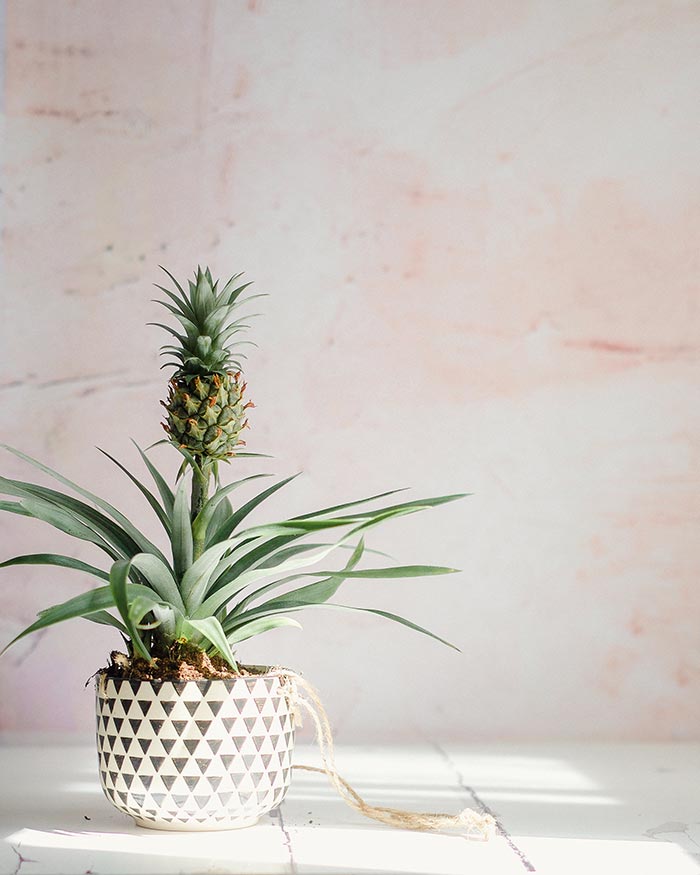
Strawberries
Like squash, most people think you need a lot of room for this fruit. You will need a larger container, but you can certainly grow strawberries in a pot anywhere there’s plenty of sun. Also like squash, make sure you harvest the … ahem, fruits of your labor … regularly. That will encourage additional growth so you can reap the rewards year-round.
How to use it: Two words. Strawberry. Shortcake.
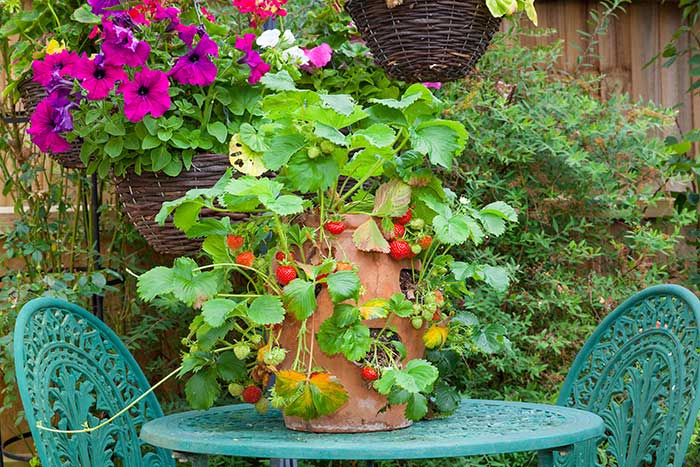
Radishes, cucumbers and carrots
The Brothers Grimm might have given radishes a bad reputation when the witch in Repunzel grew them. Don’t let that stop you from planting them in your own container garden, though. They’re actually very easy and good crop for beginners. Choose a small planter – something the size of a paint bucket should give them plenty of room – and water them every few days. Now you won’t have to steal them and sacrifice your first-born to the witch next door.
Cucumbers are a good veggie for those smaller gardens. The Old Farmer’s Almanac recommends a one-gallon pot for varieties such as Patio Pik, Pot Luck or Spacemaster cucumbers. Cucumbers are a vining plant, so make sure you also have a trellis or porch railing they can climb.
If you’re growing to grow carrots in a container, the number one rule is to choose the right variety. Thumbelina, Romeo, Little Finger, Short ‘n’ Sweet (how adorable are those names!) are perfect because they don’t grow as long. Your pot should be wide and, more importantly, at least one foot deep to give your carrots room to grow underground. Try not to crowd the seeds, then place the container in full sun. You’ll likely see growth within about a week.
How to use them: Toss them in a healthy side salad or pickle your cucumbers to enjoy later in the year.
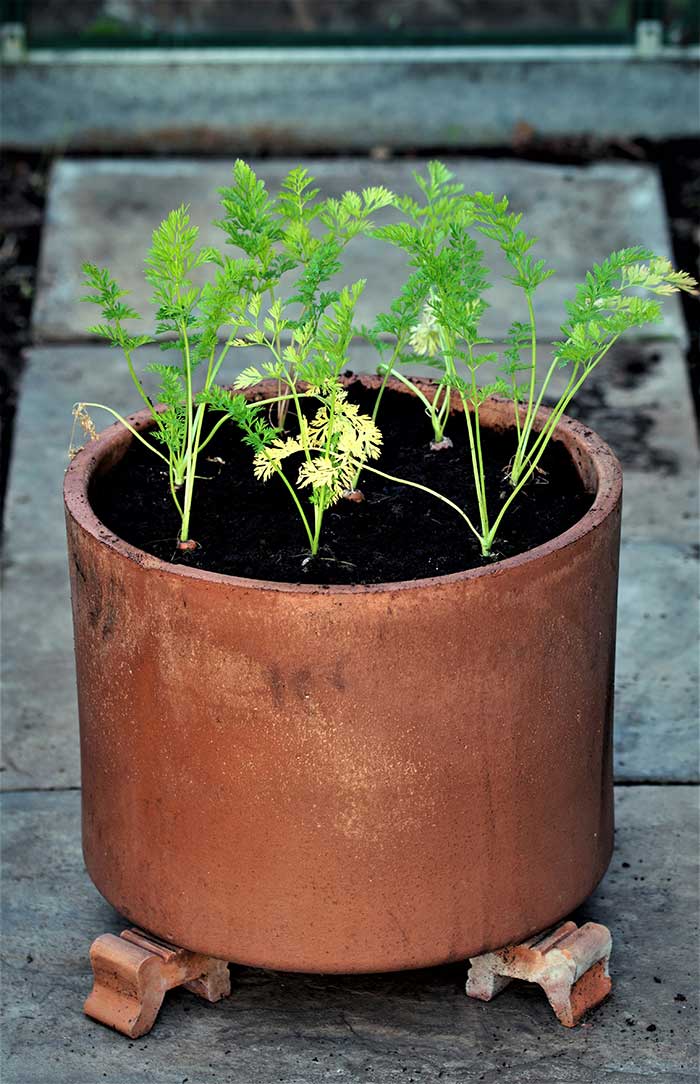
Beans
Try bush beans or pole beans in particular. All you need is a 12-inch pot and a pole or tomato cage for them to climb. Gardening Know How recommends a vegetable start mix, which has more nutrients than generic potting soil. After planting about two or three seeds around each pole, you should see some growth with a week. Give it about a month or two, depending on the sun and weather, and you’ll be dining on some delicious green beans before you know it.
Some plants grow better when they have a compatible friend nearby. Beans can often go in the same container as carrots and squash, but keep them away from onions and garlic.
How to use them: Put the casserole dish away. Try bacon-wrapped green bean bundles instead.
Quinoa
We don’t often think about growing whole grains, but if you plant quinoa, that’s exactly what you’re doing. It’s a bit more labor intensive than some of the other plants on this list – you’ll have to eventually separate the seeds from the chaff before eating – but most people think it’s worth the effort.
How to use it: So many ways – in a soup, as a salad topper, in place of oats at breakfast, as the base for a burrito bowl …
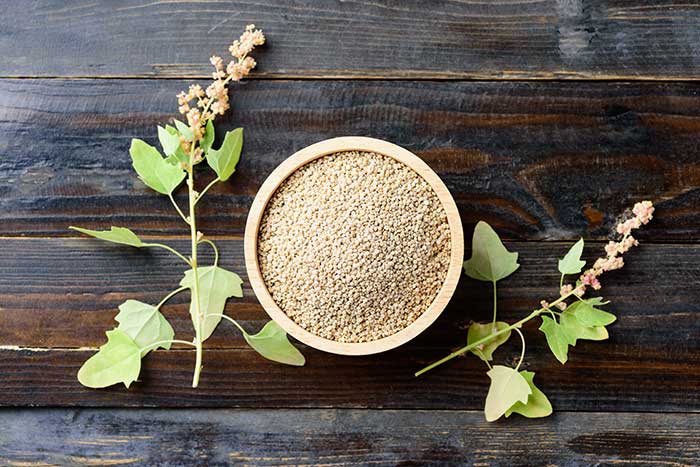
Looking for more DIY projects? Visit the Schlage blog and find new ways to amp up your curb appeal, refresh your home for spring and more.





